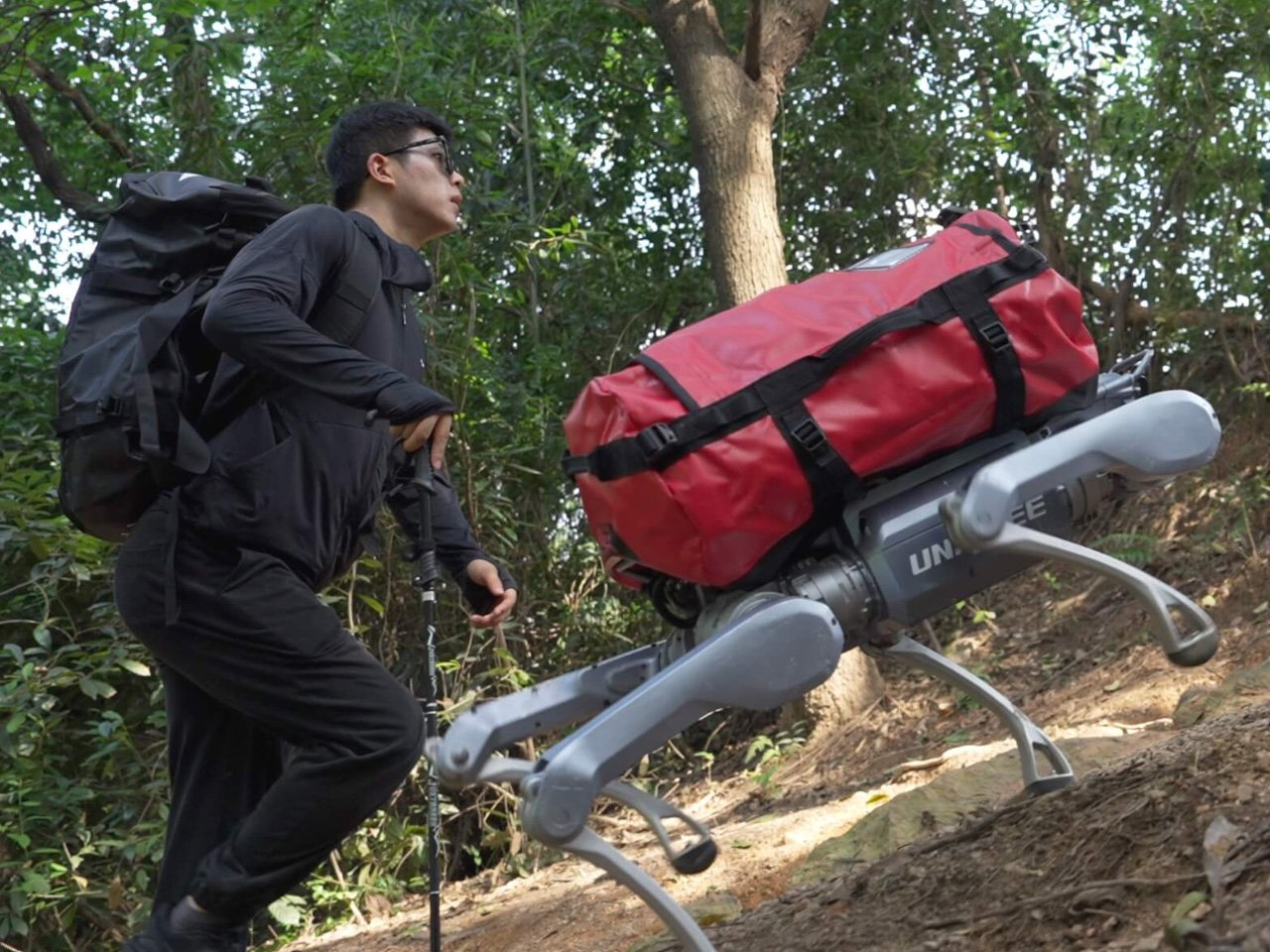Boston Dynamics has triggered a race for building useful humanoid robots, with Spot the dog robot being their most successful creation. Open source Hengbot Sirus and Hiwonder’s Raspberry Pi-powered PuppyPi are prime examples of how the robotic dog arena is shaping up. Even the tiny Petoi Bittle X proves robotic dogs are here to stay if you don’t want the nuances of a real puppy. Unitree also has its own version of a four-legged bot in the shape of Go2. They’ve also upped their game with robots like the B2 and R1 humanoid.
Now the Chinese robotics company has stunned the tech world with A2 Stellar Explorer, which is a robot dog built for tough terrain missions and stellar jobs. Having a dry weight of 81 lbs, the A2 robot is quite agile and can carry a stationary load of 55 lbs, even on inclines. When stationary, the robot dog can handle a weight of 220 lbs, which is demonstrated in a recently released video where a person is standing on the poor pet. It can even perform complex stunts like front flips, jumps, and hold the weight of an adult riding on optional four wheels. Wow, that’s like riding a personal dog skateboard to the amazement of onlookers.
Designer: Unitree Robotics
Super Agile and strong
Hauling a sizable load for around 12 km before requiring a recharge is a normal day’s work for this robotic dog. Just to get a fair idea of what the A2 is capable of, well, it can run for 5 hours when unloaded, or for 3 hours with a load on. When running, it can achieve a top speed of 11.2 mph, which is impressive. Steep climbs, 1-meter-high obstacles, and steps measuring 30 cm high are no worry for the four-legged robot, given it has a torque delivery of 180Nm. That’s possible courtesy the 9,000 mAh battery pack, which is hot swappable if you want the dog to keep going 24×7. At the end of the day, the bot is a machine, so it employs a dual LiDAR system (on the front and rear) to keep tabs on its real-time environment. To navigate complex terrain autonomously, a front camera and AI-powered vision system are used.
To take care of all the complex computing required for the fancy movements and actions, the four-legged robot is equipped with an Intel Core i7 processor. The Wi-Fi 6, Bluetooth 5.2, and optional 4G and GPS help it stay connected to the operator without any issues. Since the robotic dog is purpose-built for outdoors in temperatures ranging from -20°C to 55°C, it is made out of aluminum alloy and high-quality plastic. For protection against the elements, the outer shell has an IP56 rating for water and dust protection. The vital inner components are well protected with an even better rating of IP67. Unitree has not yet revealed the price of A2 Stellar Explorer, but we’re sure it will be cheaper than the $75,000 Boston Dynamics Spot.
Practical Future for Autonomous Legged Machines
The significance of the Unitree A2 lies not just in its technical achievements but in its broader implications for the evolving role of robotics in real-world environments. With its robust mobility, high payload capacity, and advanced perception systems, the A2 represents a meaningful shift from experimental prototypes to practical, field-ready machines capable of operating autonomously in dynamic and often hazardous settings.
This progression has profound real-life consequences. In industries such as infrastructure inspection, logistics, emergency response, and environmental monitoring, the A2 can serve as a resilient, untiring presence in conditions too risky or inaccessible for humans. Its ability to navigate rough terrain, carry substantial loads, and function with minimal supervision suggests a future where autonomous legged robots are not outliers, but integral to frontline operations. As platforms like the A2 mature, they stand to redefine how work is done in the physical world – augmenting human capability, reducing exposure to danger, and expanding the reach of critical tasks well beyond conventional boundaries.
The post Unitree A2 Stellar Explorer robot performs back flips, can carry a fully grown human first appeared on Yanko Design.

